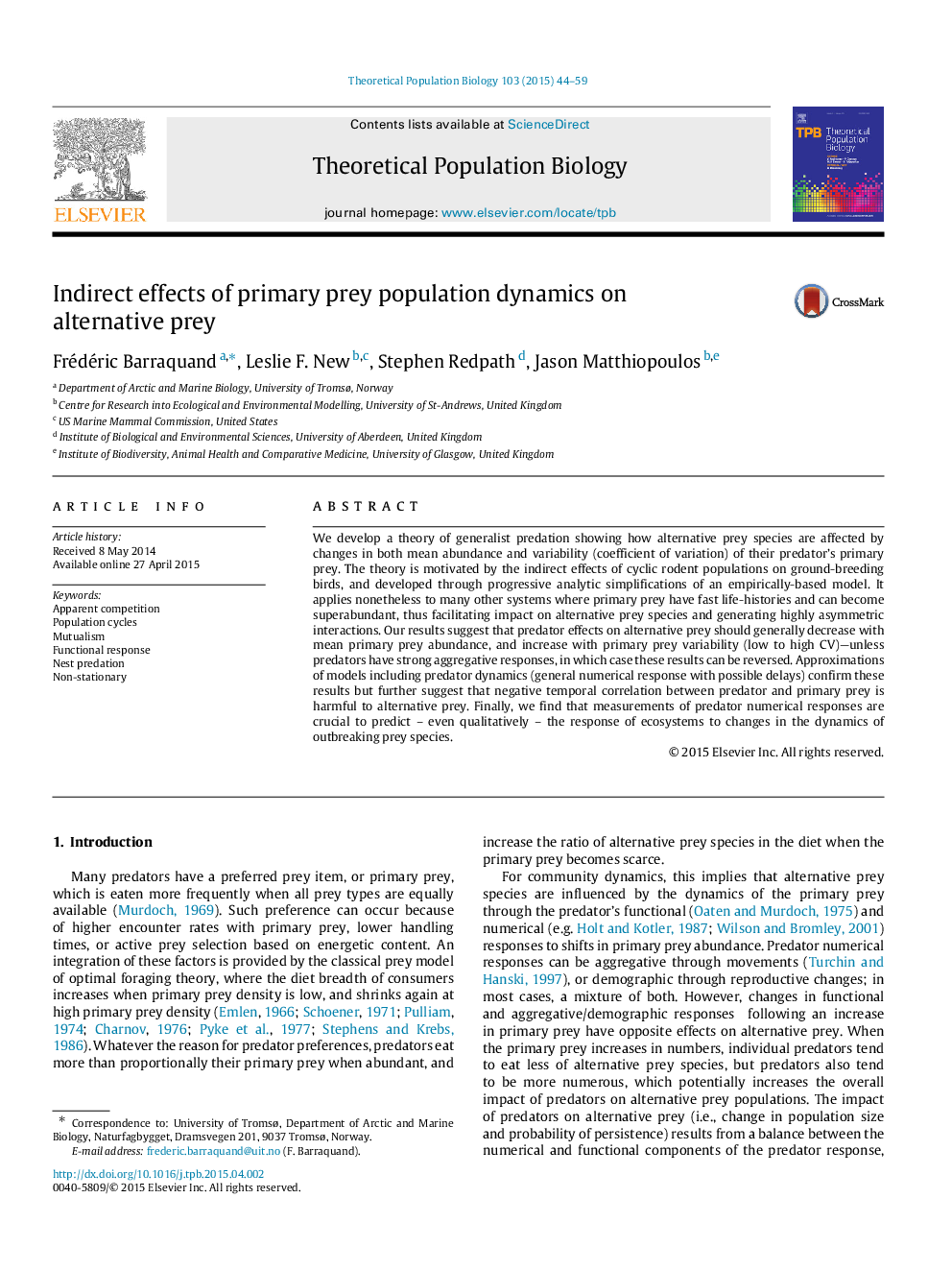| Article ID | Journal | Published Year | Pages | File Type |
|---|---|---|---|---|
| 4502284 | Theoretical Population Biology | 2015 | 16 Pages |
We develop a theory of generalist predation showing how alternative prey species are affected by changes in both mean abundance and variability (coefficient of variation) of their predator’s primary prey. The theory is motivated by the indirect effects of cyclic rodent populations on ground-breeding birds, and developed through progressive analytic simplifications of an empirically-based model. It applies nonetheless to many other systems where primary prey have fast life-histories and can become superabundant, thus facilitating impact on alternative prey species and generating highly asymmetric interactions. Our results suggest that predator effects on alternative prey should generally decrease with mean primary prey abundance, and increase with primary prey variability (low to high CV)—unless predators have strong aggregative responses, in which case these results can be reversed. Approximations of models including predator dynamics (general numerical response with possible delays) confirm these results but further suggest that negative temporal correlation between predator and primary prey is harmful to alternative prey. Finally, we find that measurements of predator numerical responses are crucial to predict–even qualitatively–the response of ecosystems to changes in the dynamics of outbreaking prey species.
